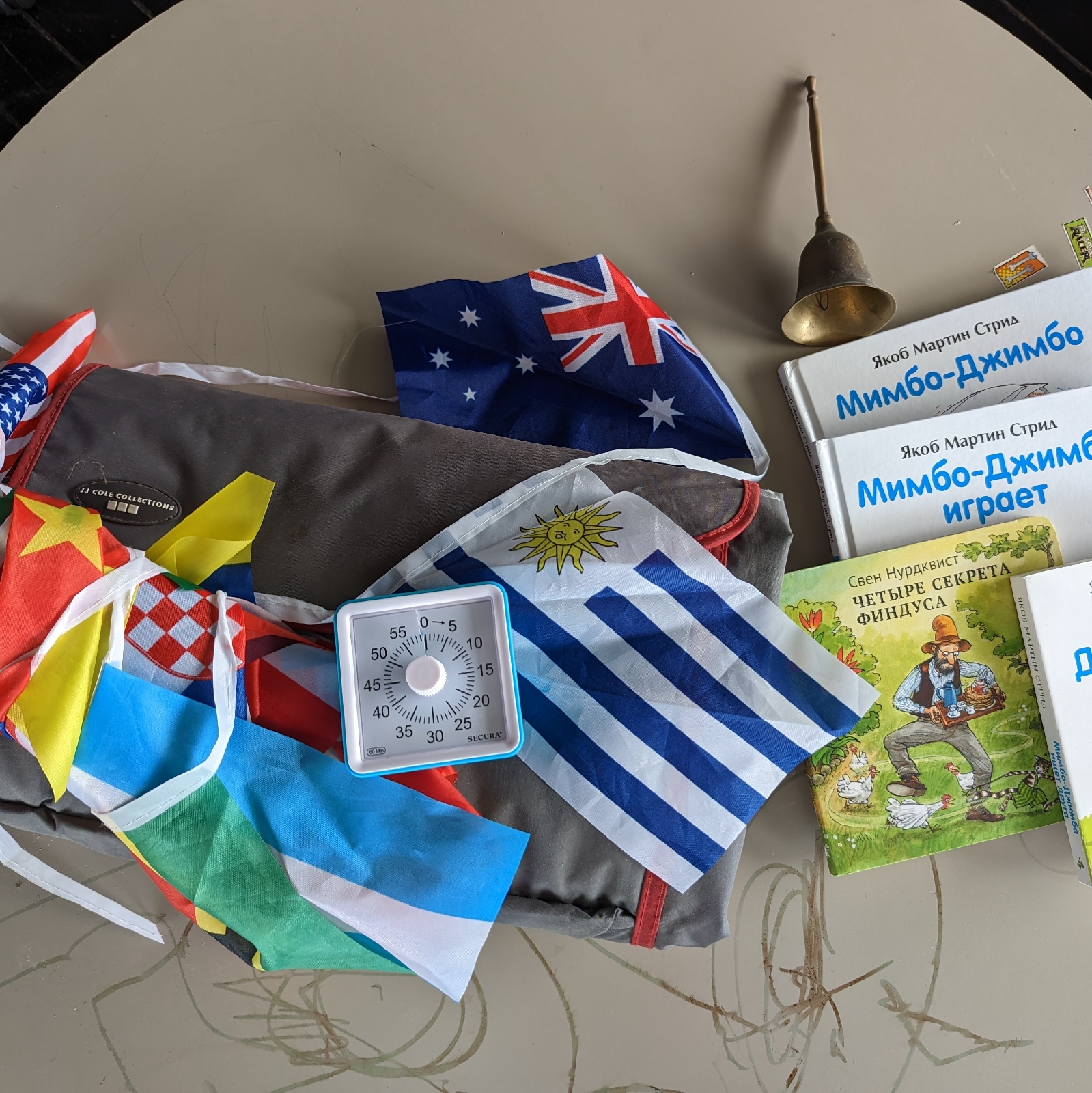Excited - because it's in my native Russian language, and because my youngest (he's 2.8yo) will be a part of it.
Terrified - because it's the youngest group I've ever worked with, toddlers and young preschoolers: ages 3-5yo. Also it's probably the most diverse age category, since older siblings (5-7yo) will also join.
I've written elsewhere how to start a storytelling community, and also what's in my portable classroom. Now, for this young and diverse audience, I'm adding more items to my portable classroom. Every activity needs a time and a place, and the items in our portable classroom will help to define these.
Place: we're meeting at the local park. In order to "define" our little corner of the world, we'll bring:
- Picnic blanket - to sit on and talk and read and play
- Garland - to make the space prettier and more "put together"
Time: we'll meet in the morning, for about an hour. We'll follow our usual story circle structure for young storytellers. In order to help us to keep track of time, we'll use:
- Timer - can be useful when the discussion gets too long and we need to get back on track
- Bell - to mark the beginning of the activity
That's it!
I hope this story circle will be a success... time will tell!

Comments
Post a Comment